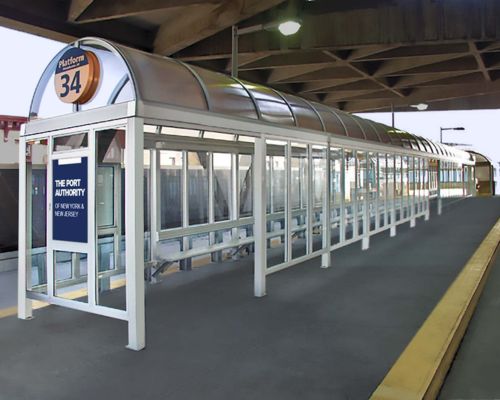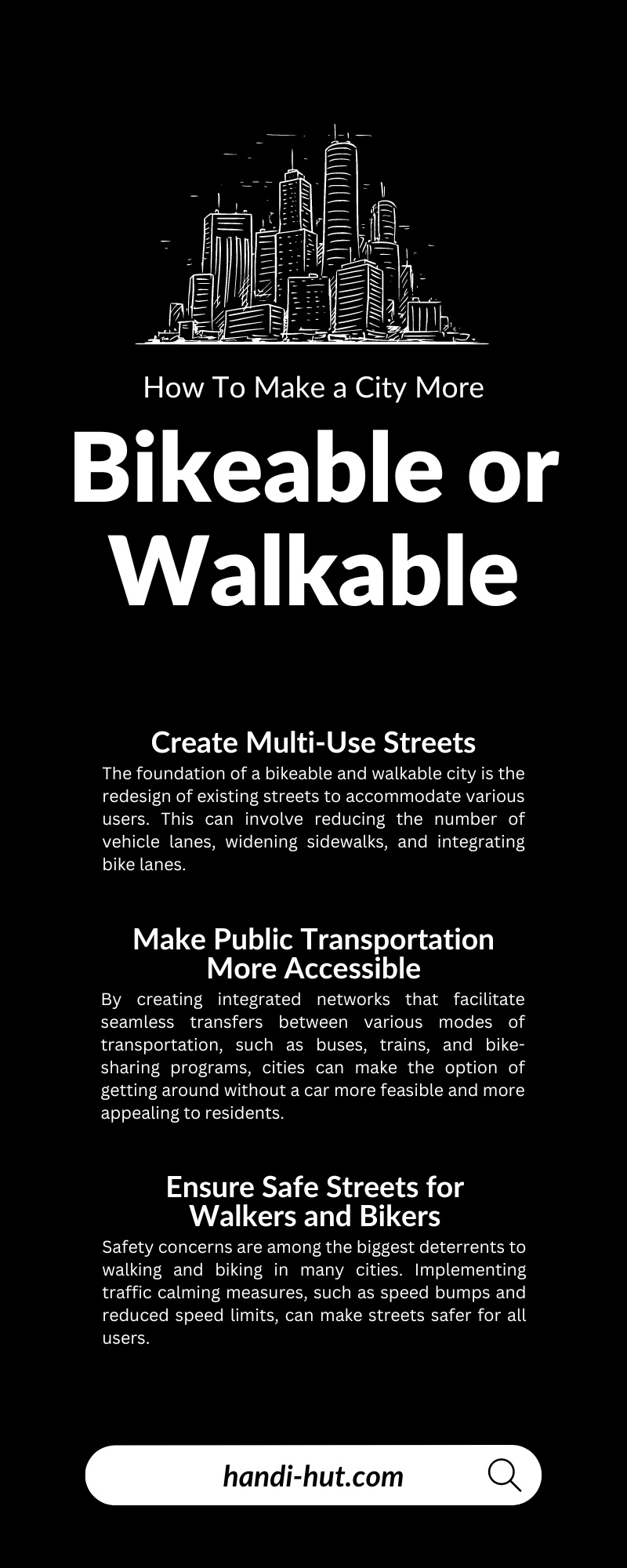
As cities expand and traffic noise and congestion increase, there is a growing need for pedestrian- and cyclist-friendly city models. Urban planners around the globe are working on innovative ways to turn concrete jungles into sustainable, livable areas. There are many promising benefits of promoting walkable and bikeable city models, including minimizing traffic, building community, enhancing public health, and more. Through this guide, you can learn how to make a city more bikeable or walkable. Discover the benefits, challenges, and practical steps related to creating a more people-focused urban environment.
The Importance of Bikeable and Walkable Cities
Before we plunge into the logistics, it’s essential to understand precisely why city planners everywhere are promoting walkable and bikeable urban environments. When cities prioritize pedestrians and cyclists, the environment reaps the benefits of reduced greenhouse gas emissions and improved air quality. There’s also a significant impact on public health, with increased physical activity promoting healthier citizens and reducing chronic diseases.
From a social perspective, walkable neighborhoods foster more regular interactions between residents, promoting a stronger sense of community. Local businesses can also take advantage of the benefits, as a more pleasant urban environment encourages people to stop, shop, and contribute to the local economy. Not to mention, the integration of walking and biking infrastructure with public transit can significantly reduce congestion and offer a more equitable mode of transportation for all citizens, regardless of income or age.
Considerations for a Walkable and Bikeable City
When transforming urban spaces into zones that prioritize pedestrian and cyclist accessibility, city planners must consider several elements. Here are some of the major considerations for cities thinking about adopting a walkable and bikeable model:
Existing Infrastructure
The foundational layout of the city, its pre-existing public transit systems, and even the natural topographical features play a pivotal role in determining which walkability and bikeability enhancements are viable. For instance, a city with sloping terrain may need to implement different solutions compared to one with flat landscapes. Additionally, integrating new pathways must complement, not disrupt, the existing transit routes and urban flow.
Local Culture and Demographics
You must thoroughly understand the local population’s needs, habits, and routines. The design of walking and biking infrastructure should not only aim to accommodate the current demographic but should also account for potential changes down the line. This involves considering various factors, such as the average age of the population, their commuting patterns, and the recreational habits that might influence the use of such spaces.
Economic Implications
While the benefits of promoting a more walkable and bike-friendly environment are manifold, it’s vital to confirm your city has the economic availability to do so. Weigh the cost of implementing new infrastructure against the potential to enhance the local economy by attracting more foot traffic to business areas. Moreover, ensure that these developments are accessible to everyone, regardless of economic status, to foster a sense of community and belonging.
When making urban spaces more conducive to walking and biking, city planners must navigate these considerations with care, aiming to create environments that are safe and accessible as well as vibrant and inclusive.
Steps To Make a City More Walkable and Bikeable
Creating walkable and bikeable cities is a complex and ongoing task that requires a multifaceted approach. Explore some of the most crucial steps urban planners must take to achieve this transformation.
Create Multi-Use Streets
The foundation of a bikeable and walkable city is the redesign of existing streets to accommodate various users. This can involve reducing the number of vehicle lanes, widening sidewalks, and integrating bike lanes. Multi-use streets are more practical, and they signal a city’s commitment to the safety and convenience of non-motorized transportation.
Make Public Transportation More Accessible
A robust public transit system plays a pivotal role in developing a walkable and bikeable city. By creating integrated networks that facilitate seamless transfers between various modes of transportation, such as buses, trains, and bike-sharing programs, cities can make the option of getting around without a car more feasible and more appealing to residents. This approach not only enhances the urban living experience but also contributes to a reduction in traffic congestion and environmental pollution, making cities more sustainable and livable.
Ensure Safe Streets for Walkers and Bikers
Safety concerns are among the biggest deterrents to walking and biking in many cities. Implementing traffic calming measures, such as speed bumps and reduced speed limits, can make streets safer for all users. Additionally, well-lit pathways, appropriate signage, and the separation of bike lanes from vehicle traffic can significantly enhance safety.
Install Covered Shelters for Walkers and Bikers
Extreme weather can be a significant obstacle for walkers and bikers. Installing walkway covers and shelters at bus stops, along pedestrian routes, and at bike parking facilities can provide protection from the elements and encourage more people to opt for non-motorized transportation.
Include Bicycle Storage Options
Convenient and secure bike storage solutions, such as public bike racks and bike lockers, should be readily available throughout the city. These amenities protect bicycles from theft and the elements. By improving accessibility to bike storage, cities can foster more sustainable and active communities, encouraging healthier lifestyles for the sake of the environment and residents.
Challenges and How To Overcome Them
Making the transition to a more bikeable and walkable city may pose some challenges. Urban planners commonly face resistance from those who fear reduced vehicle access will harm businesses or inconvenience residents. However, various strategies can help overcome these obstacles, including:
- Public engagement: It is crucial to engage the community in the planning process and communicate the benefits of walkable and bikeable cities. This builds community support and can also lead to more innovative solutions.
- Piloting initiatives: Starting with small, temporary changes and evaluating the impact can help reduce the risk associated with larger, more permanent projects.
- Data-driven decision making: Utilizing data on traffic patterns, economic activity, and public health can support your cause and help make your case regarding the benefits of walkable and bikeable spaces.
Making a city more walkable and bikeable is not just an idealistic dream but a tangible goal with quantifiable benefits. By creating urban environments that prioritize pedestrians and cyclists, cities can achieve greater sustainability, improved public health, and enhanced community engagement. By implementing the strategies outlined in this guide, you can contribute to a global movement of cities that are becoming more people-driven and sustainable.
Start by exploring shelters and enclosures from Handi-Hut to make your walkways and bike routes more accessible for your citizens. We make biking solutions easy to add to your urban environment so you can accommodate your pedestrians’ needs. Browse our shelters today or reach out to our team for more information.

